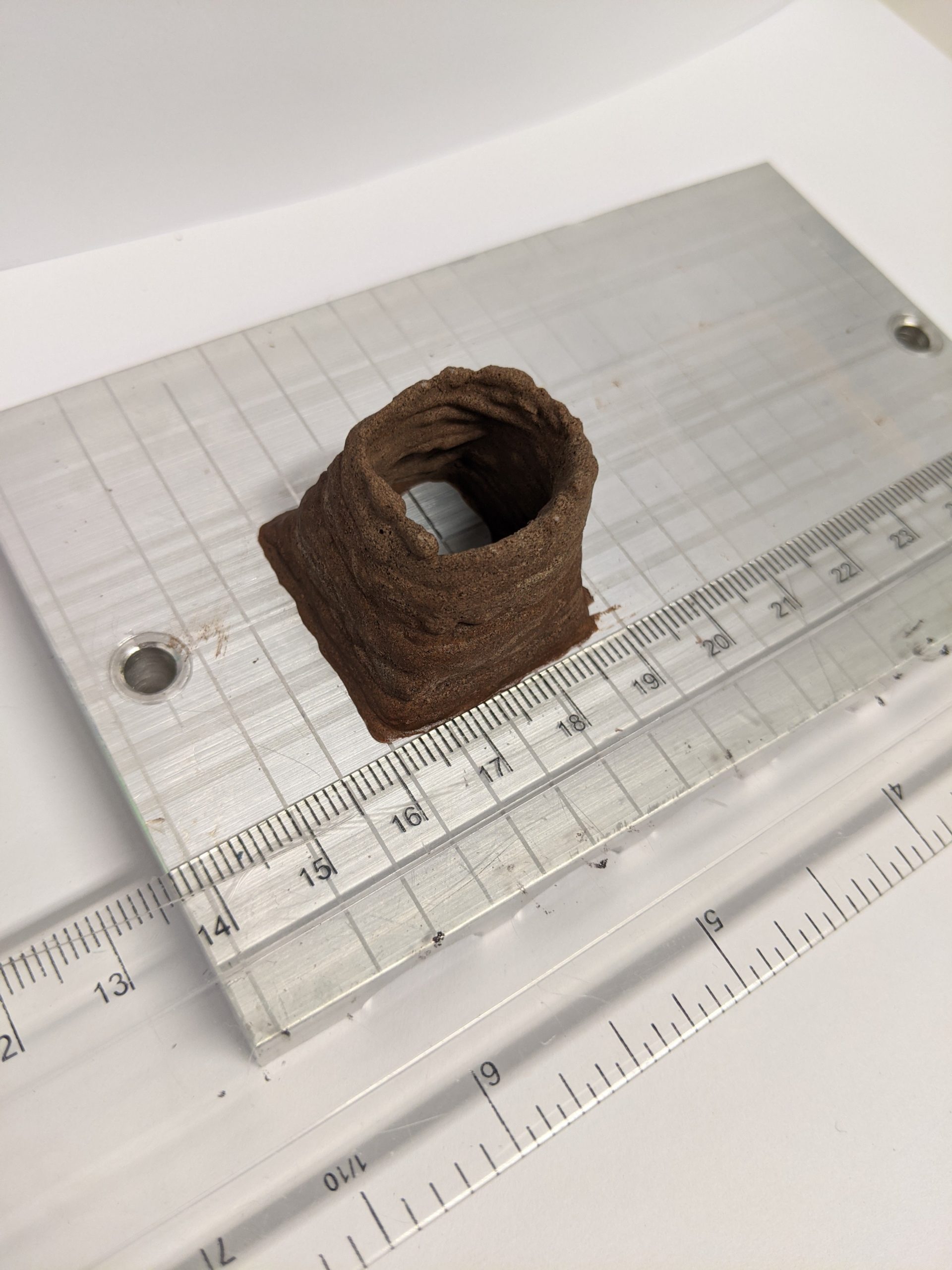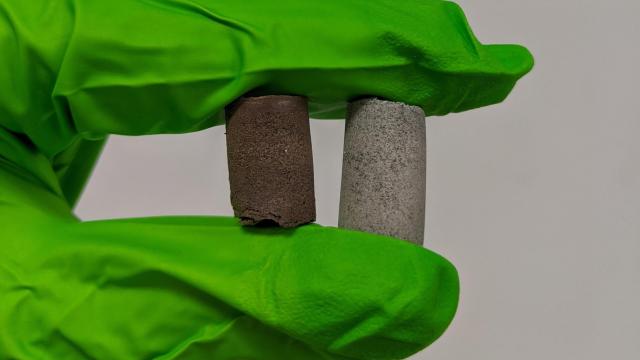Provocative new research suggests the blood of astronauts, when mixed with Martian soil, can produce a durable concrete-like substance. Incredibly, other human bodily fluids were shown to make this biocomposite even stronger.
The first colonists to arrive on Mars will need to build shelters and spaces for work, but the Red Planet isn’t exactly bustling with hardware stores and material suppliers.
Ideally, the colonists could use some of the stuff that’s right there on Mars, such as regolith (soil), rocks, and water, the latter of which is sparse and hard to reach. Trouble is, these on-site resources don’t magically combine to produce viable construction materials.
Of course, we could always ship a bunch of bricks to Mars, but that presents a ridiculously expensive proposition. Estimates suggest that it would cost upwards of $US2 ($3) million to transport a single brick to the Red Planet, which, yeah, that’s not going to happen.

New research published in Materials Today Bio could potentially come to the rescue. The needed resources to produce a concrete-like substance could come directly from the colonists themselves, in the form of blood, sweat, tears, and urine, according to the study, co-authored by chemist Nigel Scrutton from the University of Manchester.
“Scientists have been trying to develop viable technologies to produce concrete-like materials on the surface of Mars, but we never stopped to think that the answer might be inside us all along,” Aled Roberts, also from the University of Manchester, said in a statement.
In tests, the researchers demonstrated that the human serum albumin (HSA) — a common protein found in blood plasma — can act as a binder when combined with simulated Martian and lunar regolith. AstroCrete, as they’re calling it, proved to be as tough as concrete and in some cases even tougher.
This idea didn’t come from thin air, as animal blood and other animal parts have historically been used to produce building materials, such as binders and glue. The ancient Romans, for example, used animal blood when making concrete. The researchers suspect the process of denaturation, or the curdling, of blood as being responsible for AstroCrete’s bonding power.
In tests, the blood-based binder produced a concrete-like substance with compressive strengths reaching 25 Megapascals (MPa), which is comparable to ordinary concrete. Subsequent tests with the addition of urea — a biological waste product found in urine, sweat, and tears — further increased the compressive strength by 300%. The best combination of HSA and urea resulted in a compressive strength of 40 MPa, which is considerably stronger than normal concrete. Importantly, the team performed these tests on simulated Martian regolith; the real thing may not respond exactly in this way.
The scientists propose that AstroCrete could be used as an aggregate material to fill sandbags or to make heat-fused bricks. To get the required amounts of HSA, the crew would have to donate their blood twice a week. According to the paper, a two-year mission involving six colonists could allow for the production of 1,100 pounds (500 kg) of the high-strength version of AstroCrete. Should each crew member chip in with their blood and urine, the colony would have enough material to double the available housing over the two-year span, setting the stage for future newcomers.
An advantage of AstroCrete is that, unlike “other proposed binder materials, HSA production does not require any additional synthesis technology such as bioreactors or synthetic polymer/resin production equipment — which would add additional mass (and therefore expense) to a Martian mission, as well as increase energy-, water- and workload-demand, and also be susceptible to component failure,” according to the study. What’s more, the team showed that the biocomposite can be 3D printed.
As a relevant aside, the team considered other on-site human resources, such as nails, hair, dead skin cells, mucus, and poop. On the matter of poop, the team cited previous research showing that it’s not possible to make knives from frozen poop — a study that earned those scientists an Ig Nobel prize. Given that temperatures on Mars can get as low as -81 degrees F (-63 degrees C), Scrutton and his colleagues toyed with the idea of “frozen or desiccated faeces-based tools.” But as the researchers write in their study, “due to health and safety concerns, we were unable to explore human faeces-based [extraterrestrial regolith biocomposites] in this study.” Shame. But that sounds like a good idea for a future experiment.
The new paper is really neat, but the scientists still need to demonstrate their process with true Martian regolith, as well as show that their process and biocomposite material will work under Martian conditions. What’s more, they’ll have to show that the regular extraction of blood from the crew members is safe. New techniques for producing building materials on Mars could arise in the coming years, perhaps making this blood-curdling idea obsolete.
More: Missions to Mars shouldn’t exceed four years due to radiation risks, scientists say.
